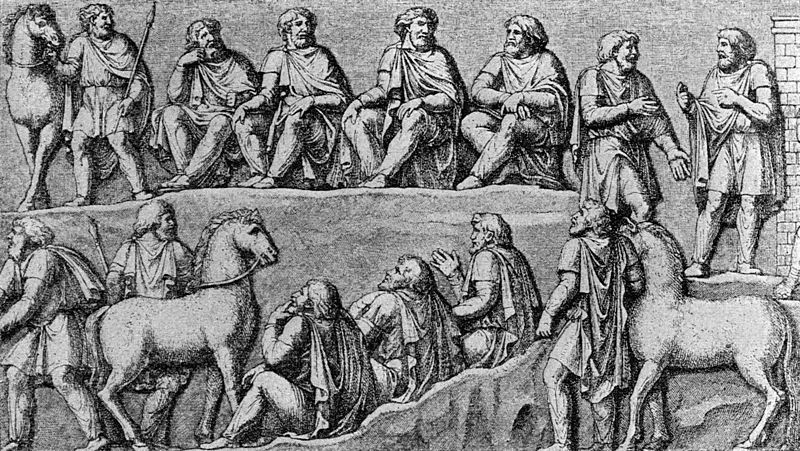Howdy, Stranger!
It looks like you're new here. If you want to get involved, click one of these buttons!
If you have an email ending in @hotmail.com, @live.com or @outlook.com (or any other Microsoft-related domain), please consider changing it to another email provider; Microsoft decided to instantly block the server's IP, so emails can't be sent to these addresses.
If you use an @yahoo.com email or any related Yahoo services, they have blocked us also due to "user complaints"
-UE
If you use an @yahoo.com email or any related Yahoo services, they have blocked us also due to "user complaints"
-UE
This is a thing.



Comments
>First bronycon ever
YES.
Also, horses have been heavily bred over the many hundreds of years to be taller and faster. As this is a depiction from the 2nd century, it would make sense that their horses are smaller than they are today. It should also be noted that in the ancient Germanic battles, horseback fighters were very uncommon. Havamál (the wisdom of Odin) suggests that if someone is lame, they can still fight from the back of a horse, so I guess if you did see a horseback fighter, he was probably just handicapped. Sea travel was also heavily favored over land travel due to its speed and safety.
Icelandic horses are also well-known for being small, almost pony-sized.
Most of the large horses you see used in racing etc. now are thoroughbreds, meaning they're all descended from three Arabian horses brought over from the Middle East in the 17th/18th centuries. Before that, most horses were indeed smaller.
Ancient Germany, IIRC, was heavily-forested and swampy - not the sort of place you'd really want a large horse even if most of the inhabitants could have spared the fodder to keep one going. I assume having a horse was probably a mark of status/wealth for that reason.
Close combat cavalry as we tend to think of them weren't "perfected" until about the 14th or 15th century, with well-bred warhorses, plate armour and specifically designed spears for mounted combat. Note that the distinction between a spear and a lance is one of context until late in the Middle Ages.
Aaaaaaaaaa...